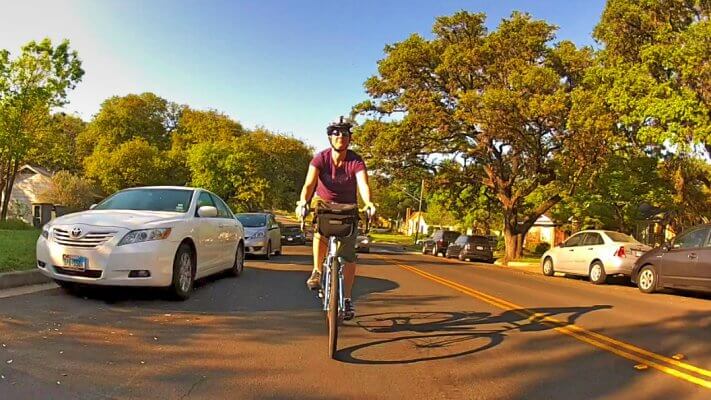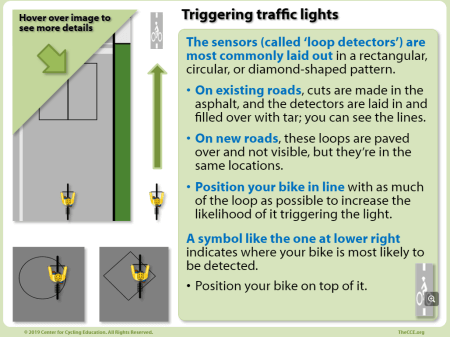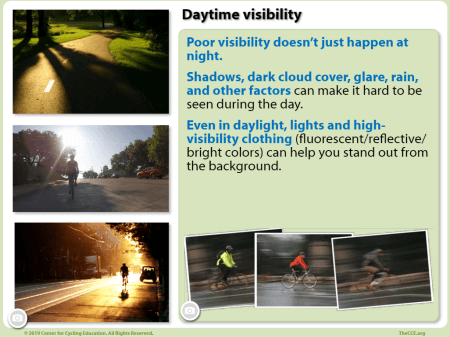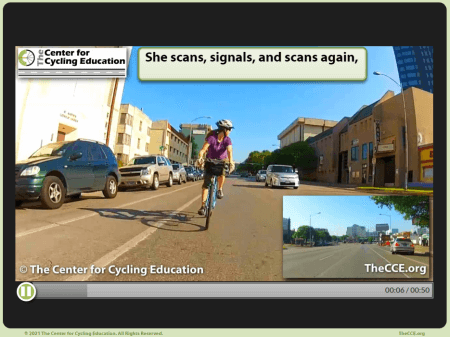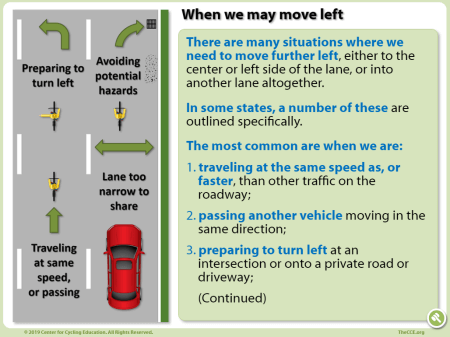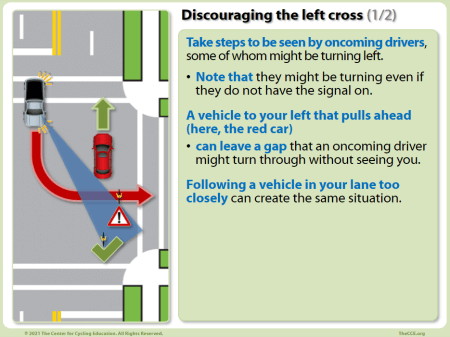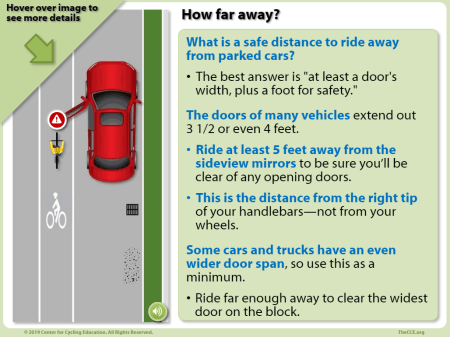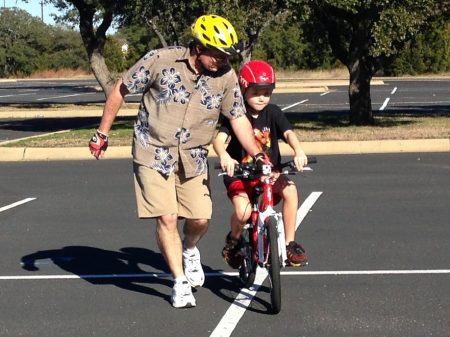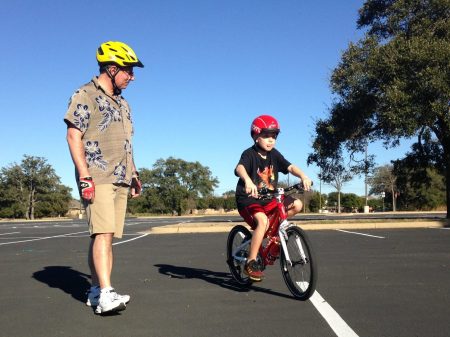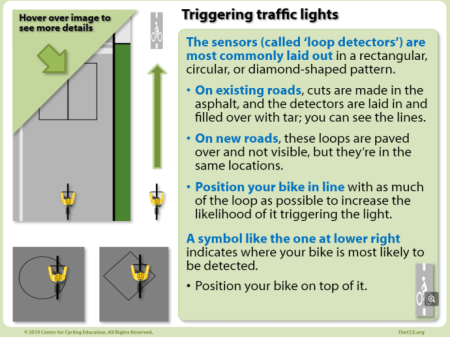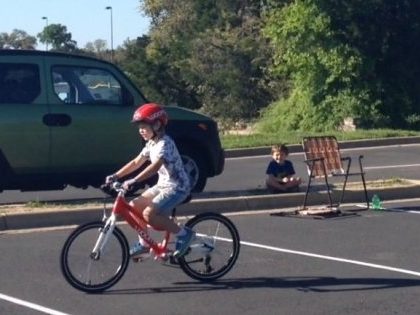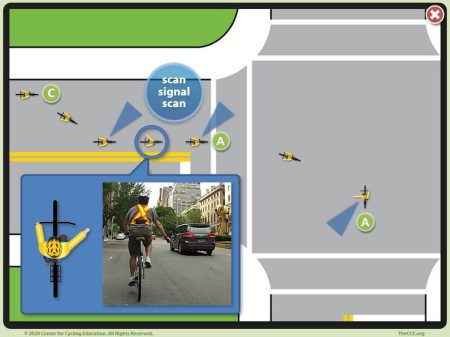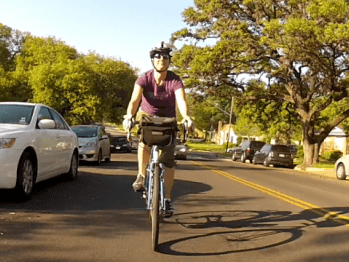How do I ride a bike in traffic?
“Don’t you just get on and pedal?”
Driving a car properly in traffic involves a number of important approaches and skills.
The same goes for riding a bike, and then some. Why? Because we’re:
- Generally moving at a lower speed than others around us.
- Smaller, and therefore less easily seen.
- Different from most other road users (motor vehicle drivers), and thus subject to:
- not being looked for, and/or
- being ignored / treated less courteously / harassed.*
* Sometimes the opposite happens, which can require its own techniques.
For these reasons and more, we need approaches and skills beyond those required for driving a car.
Sure, it’s possible to go out on the road without any forethought and training. It’s also possible to make sound on a violin without lessons. The end results are different.
Complimentary sections from our online courses: ![]()
- Skills for riding in traffic:
- Other available sections:
Here are the topics we cover in-depth in our online ‘Traffic Smarts for Cyclists‘ courses: ![]()
- These will help you increase your competence and comfort in traffic, regardless of your current experience level.
- Being an MVP-C (Maneuverable, Visible, Predictable, and Communicative).
- Ensuring you have the right equipment, and parking your bike securely.
- Refining your bike handling skills.
- Considering how people behave in traffic.
- Knowing your rights & duties.
- Scanning & signaling properly.
- Choosing your place on the road.
- Managing intersections effectively.
- Riding:
- on sidewalks.
- near trucks & buses.
- side-by side.
- on paths & trails.
Sample content from our online cycling courses.
